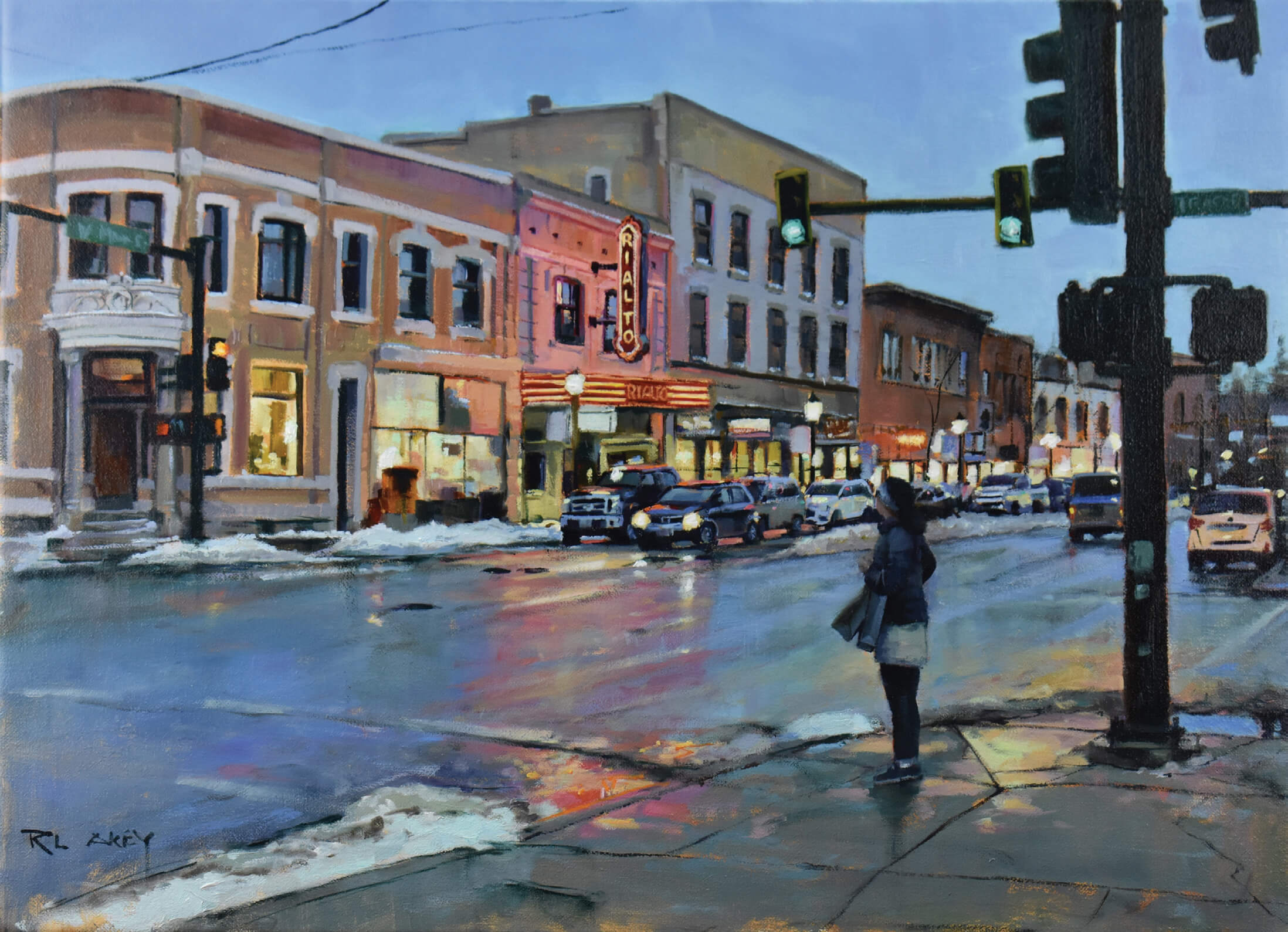
28 Sep Artist of the West: Life Lessons
Suspending the prescience of time, painter Rob Akey’s solitary scenes allow viewers to take a precious breath, understand a fleeting aperture of light, and stay a moment to linger. His ability to encapsulate our inner lives — even amidst busy city streets — speaks to our experiential awareness of the transitory moments that exist within. “I’m steeped in the representational,” Akey says. “I just love Montana, it’s where I came from and where I’m coming back to. I love the landscape I live in. I feel as though I’m drawn to representing that in a painterly way.”
The way he’s chosen is through an American Impressionistic style, which allows him space to react to iconic scenes and offer a personal perspective. Differing from French Impressionism, his style is one that brings deeper meaning to daily life in urban settings. “I flirt with cliche images,” the artist says, “but I feel those are things I emotively respond to — which is not to say a dry parched coulee doesn’t attract me as well. Austere boiled-down minimal language is a boundary I can see; the older I get, the more courageous I feel.”
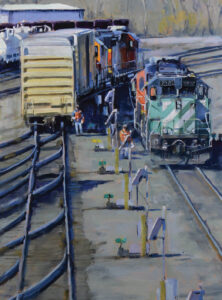
Rhythm of the Railyard | Oil | 23 x 16 inches
Although Akey sometimes paints en plein air, more often he brings his ideas into his Whitefish, Montana-based studio. There, the representational approach he uses adds an unrefined touch that reflects the Western region and also the bigger picture: the spontaneity of our collective experiences.
“It’s resonant of the Western way of thinking and approaching life, which is chancy and slapdash. It’s a scrappy way of living,” he says. “And I truly love for my art to feel that way, to encompass the subject matter and the execution with the style of life in the West.”
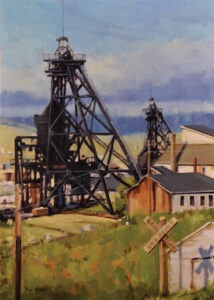
Guardians of the Hill | Oil | 28 x 20 inches
In his oil painting Coltrane Afternoon, Akey drops the viewer onto an unplowed street in Livingston, Montana, where a muffled quietness floats like notes, and the winter light dusts blues and pinks over the setting. “There’s a rawness, an unforgiving honesty to the Western aesthetic,” Akey says. “And I want my work to feel that way. I enjoy the challenge of trying to be true to those ideals and have paintings that will find their way out of the gallery and appeal to someone [enough] to hang it on their wall.”
Akey believes that each piece he creates needs to elicit an immediate response from the viewer. “The best compliment is: ‘I was exactly there. I can smell that sage,’” he says. “It’s not whether my perspective is exactly right. Over-the-top drama stands in the way of the personal aspect of a work. I look for something real, and yet it looks like it came off the end of the brush. … Maybe there was a struggle, a small correction.”
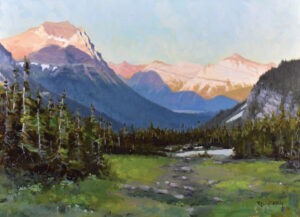
Evening Light at Logan Pass | Oil | 22 x 30 inches
Maria Abad, director of Montana Trails Gallery on Main Street in Bozeman, Montana, has represented Akey since 2018. “I think he fills a niche that nobody else does in this gallery,” she says. “He does the local scene, the candid moments that happen downtown. We do really well with his work; a lot of people want to take a piece of Bozeman with them.”
In addition, Abad explains that Akey paints a lot of seasonal work, which creates a direct emotional connection with a potential buyer. “If someone comes to Montana in the summer and walks into a gallery, it’s rare for that person to buy a piece [depicting] winter. It’s part of being in Bozeman,” she says. “You feel captivated by the painting as a reminder of your trip to Bozeman. He’s phenomenal. He makes the person looking at the painting want to grab those pieces and take them home.”
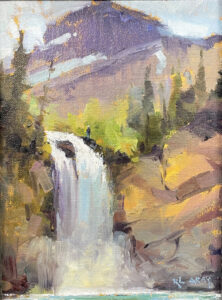
On Top of Running Eagle Falls | Oil | 8 x 6 inches
An example is The Gathering Dusk, which features a woman with shopping bags looped over her wrist as she waits for the light to change on Main Street in Bozeman. While some snow remains along the curbs, the melted water on the asphalt is lit with an evening glow. As viewers — most who have likely been in the same scenario at one time or another — it’s a common, relatable moment, and that’s the point.
“I feel that we’ve all become aware of the illusion of control we have over our lives; that something can come along that no one could foresee, and you have no control of how it’s going to play out,” Akey says. “Life has always been that way, we benefit from the illusion of control, ease, and comfort. Impressionism allows us to understand the moment, the transitory nature of our lives.”
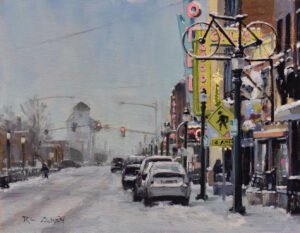
Coltrane Afternoon | Oil | 11 x 14 inches
And through American Impressionism, Akey brings deeper meaning to daily life in the West. “There’s value in doing that now for future generations,” he says. “The pandemic shows us how fast things change, and people are responding to that.”




No Comments